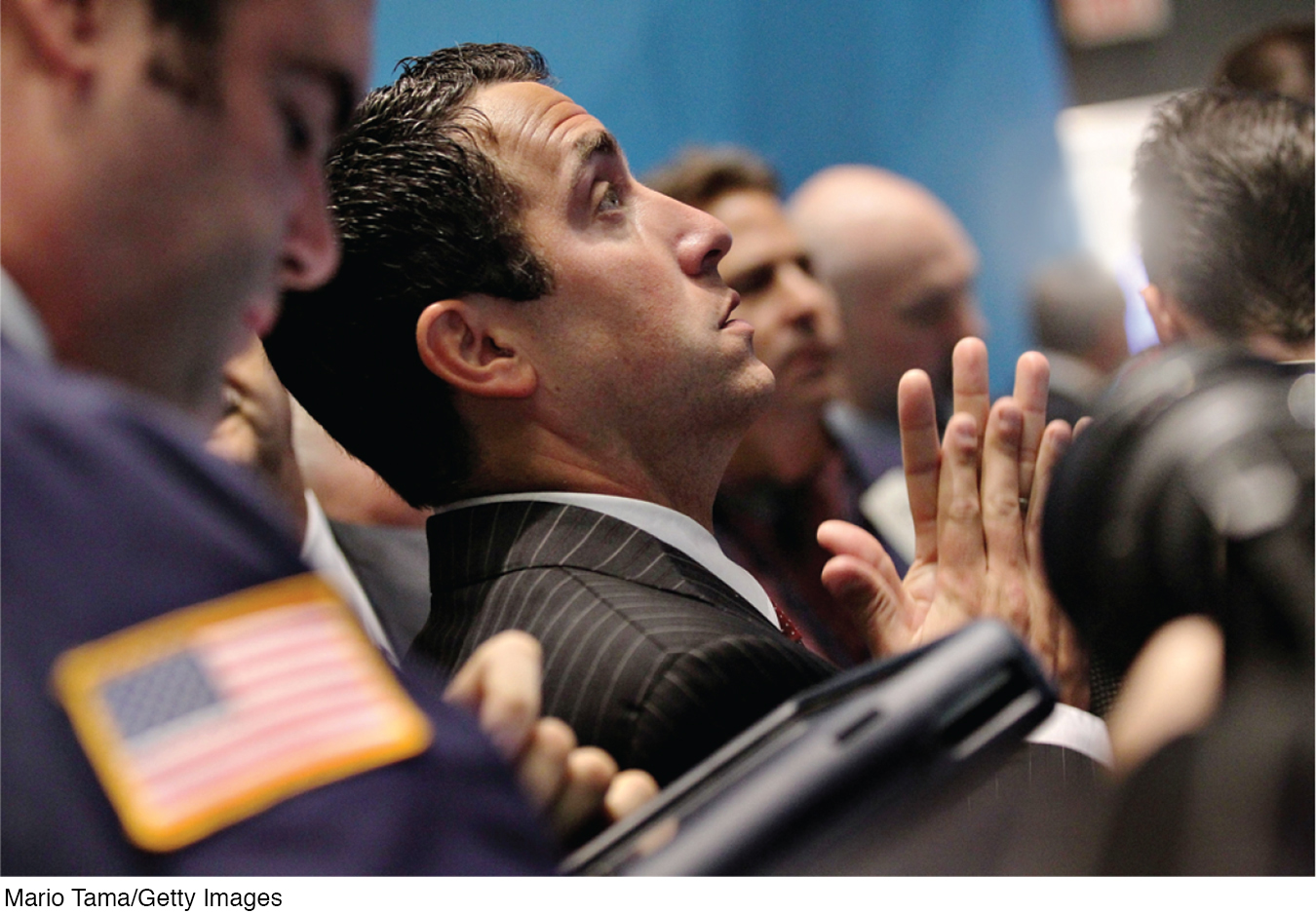Monetary Policy
24

Learning Objectives
24.1 Explain the importance of interest rates on the economy and how it affects our daily lives.
24.2 Explain the goals of monetary policy and how the Fed uses policies to expand or contract the economy.
24.3 Contrast classical monetary theory with Keynesian and monetarist theories.
24.4 Describe the equation of exchange and its implications for monetary policy in the long run.
24.5 Determine the effectiveness of monetary policy when demand or supply shocks occur.
24.6 Describe the debate on whether the Fed should have discretion or be governed by simple monetary rules.
24.7 Describe the federal funds target, the Taylor rule, and how they are used in modern monetary policymaking.
24.8 Explain why extraordinary powers were used in response to the financial crisis of 2008.
24.9 Discuss the monetary policy challenges faced by the European Central Bank following the financial crises affecting individual Eurozone members.
Information received since the Federal Open Market Committee met in January suggests that economic activity has been expanding at a moderate pace. . . . A range of recent indicators, including strong job gains, points to additional strengthening of the labor market. . . . However, global economic and financial developments continue to pose risks. . . . Against this backdrop, the Committee decided to maintain the target range for the federal funds rate at 1/4 to 1/2 percent. The stance of monetary policy remains accommodative, thereby supporting further improvement in labor market conditions and a return to 2 percent inflation.
—EXCERPT FROM THE FOMC STATEMENT OF MARCH 16, 2016
At 2:00 P.M. EST on an ordinary weekday afternoon, the Federal Reserve (Fed) concludes its meeting of the Federal Open Market Committee, and just 15 minutes later, at 2:15 P.M. a meeting statement is released. To the twelve voting members of this committee, which meets about every six weeks, it’s just another day on the job. But this is not your ordinary everyday job.
On Wall Street, millions of investors, physically present at a stock exchange or virtually present via their online brokerage accounts, anxiously await this Fed statement. Corporate executives, just coming back from lunch, immediately search their news app for the latest statement release.
Government policymakers in Ecuador, El Salvador, Panama, and Timor-
Indeed, in a matter of minutes after the release of the Fed statement, the twelve members of the Federal Open Market Committee will have affected the lives of hundreds of millions of people. How do such ordinary people carry such tremendous power?

The Federal Open Market Committee is the body within the Federal Reserve that controls U.S. monetary policy. Their economic policy decisions affect not only the U.S. economy but also the entire world economy.
Although not every Fed meeting statement produces a dramatic flurry of reactions, the ability of the Fed to exert powerful policy action in times of economic fluctuation makes its meeting statement the most dissected piece of economic news in the world. Even the most slightly nuanced wording of the statement can generate mass market activity as people attempt to predict how the Fed will act not only today but also in the months and years ahead.
This chapter studies the remarkable influence the Fed has to alter the macroeconomy using the tools that form the basis of monetary policy. The Federal Reserve Act mandates that the Fed implement monetary policies that will promote economic growth accompanied by high employment, stable prices, and moderate long-
The first part of this chapter describes how monetary policy is used during economic downturns and during economic booms. We then consider the question: How do changes in the money supply affect the economy? We will see that money has no effect on the economy’s real growth in the long run but can have sizable effects in the short run. We examine the impact of monetary policy on controlling demand and supply shocks and how the Fed actually tries to manage the economy, a process that is considered both art and science. The chapter concludes by looking at monetary policy challenges faced by the Fed and the European Central Bank, both of which have recently dealt with financial crises not seen in generations.